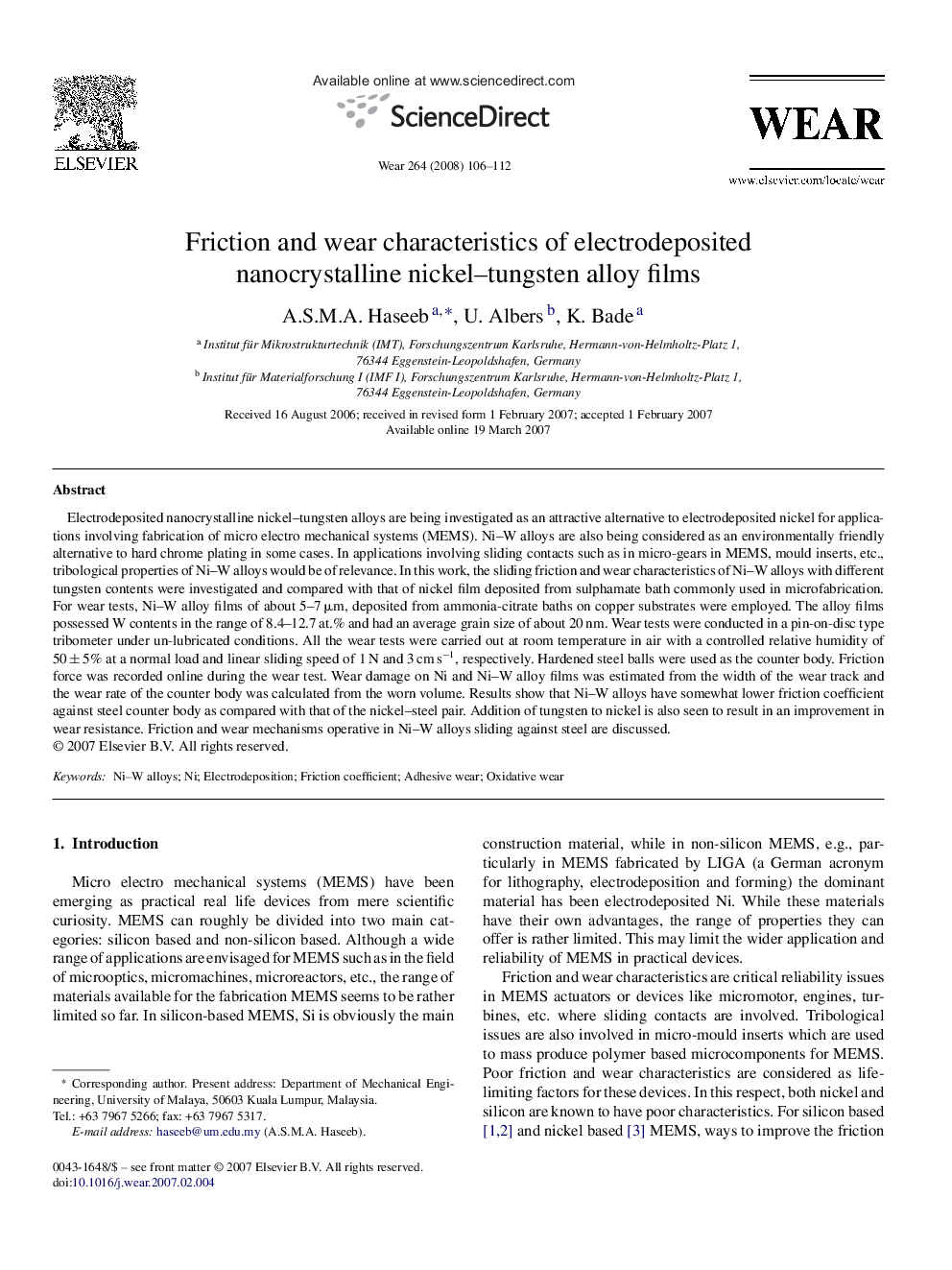| Article ID | Journal | Published Year | Pages | File Type |
|---|---|---|---|---|
| 619469 | Wear | 2008 | 7 Pages |
Electrodeposited nanocrystalline nickel–tungsten alloys are being investigated as an attractive alternative to electrodeposited nickel for applications involving fabrication of micro electro mechanical systems (MEMS). Ni–W alloys are also being considered as an environmentally friendly alternative to hard chrome plating in some cases. In applications involving sliding contacts such as in micro-gears in MEMS, mould inserts, etc., tribological properties of Ni–W alloys would be of relevance. In this work, the sliding friction and wear characteristics of Ni–W alloys with different tungsten contents were investigated and compared with that of nickel film deposited from sulphamate bath commonly used in microfabrication. For wear tests, Ni–W alloy films of about 5–7 μm, deposited from ammonia-citrate baths on copper substrates were employed. The alloy films possessed W contents in the range of 8.4–12.7 at.% and had an average grain size of about 20 nm. Wear tests were conducted in a pin-on-disc type tribometer under un-lubricated conditions. All the wear tests were carried out at room temperature in air with a controlled relative humidity of 50 ± 5% at a normal load and linear sliding speed of 1 N and 3 cm s−1, respectively. Hardened steel balls were used as the counter body. Friction force was recorded online during the wear test. Wear damage on Ni and Ni–W alloy films was estimated from the width of the wear track and the wear rate of the counter body was calculated from the worn volume. Results show that Ni–W alloys have somewhat lower friction coefficient against steel counter body as compared with that of the nickel–steel pair. Addition of tungsten to nickel is also seen to result in an improvement in wear resistance. Friction and wear mechanisms operative in Ni–W alloys sliding against steel are discussed.
